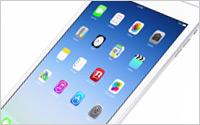
Tablets are
again among the hot gift items this holiday season, with a wider variety of models at lower prices than last year to choose from. Even so, research firm IDC is
revising downward its forecast for worldwide tablet shipments slightly in 2013 to 221 million from 227 million units.
Still,
that will mark a 53.5% gain over 2012 levels. Growth for tablet shipments, however, will slow to 22% next year for a total of 270.5 million units, and to single-digit percentages by 2017 -- when it
will peak at an estimated 386 million units, which is down from the previous forecast of 407 million.
Demand for so-called phablets, or oversized smartphones, is playing a part in slowing
tablet growth. "In some markets consumers are already making the choice to buy a large smartphone rather than buying a small tablet, and as a result we've lowered our long-term forecast," said Tom
Mainelli, research director, tablets, at IDC. In mature markets like the U.S., where tablets are well-established, there is less
concern about phablets cannibalizing shipments.
advertisement
advertisement
The market has shifted dramatically toward 7-inch tablets in the last two years, but IDC suggested the rise of large phones could drive
consumers back to larger tablets, since the difference between a 6-inch smartphone and 7-inch tablet isn't enough to justify buying both. Apple's launch last month of the iPad Air -- a thinner,
lighter version of its 9.7-inch tablet—could signal another transition back to larger screens.
That could be a positive development for Windows tablets, which generally offer a larger
screen area. But they are still not expected to grab market share from iOS and Android model in the near term. Android is expected to end 2013 with 60.8% share of the global tablet market, followed by
iOS, with 35%, and Windows, just 3.4%.
Android will maintain its dominance through 2017, when it is projected to have 58.8% share, with Windows increasing to 10.2%, mainly at the expense of
iOS, which will see its share fall to 30.6%. Jitesh Ubrani, an IDC research analyst, said he expects Microsoft to make a big push for its 2-in-1 Windows-powered devices to get much traction.